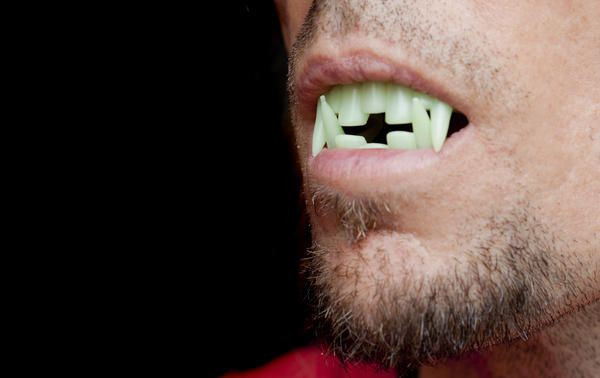8 Halloween Health Hazards To Keep In Mind: Too Much Licorice, Hidden Allergens, Glow Stick Poisoning, And More

Halloween is supposed to be scary — but shouldn't be when it comes to health risks.
Yet, aside from the common safety precautions about Halloween, like wearing bright costumes and supervising trick-or-treating children, there are several hidden threats to your safety on this colorful, candy-rich day. Keep the following eight precautions in mind whether you're the one trick-or-treating, throwing the party, or making the costumes.
“Heart Attack” Black Licorice
According to the Food and Drug Administration (FDA), eating a lot of black licorice could cause arrhythmias — abnormal heartbeats — in older adults. Specifically, if you eat more than 2 oz. a day for two weeks, and you are 40 or older, you may be at risk for arrhythmia. This is caused by an ingredient in the licorice called glycyrrhizin, a sweetening compound from licorice root, which forces potassium levels to lower. Other effects of too much black licorice include high blood pressure, edema, and lethargy.
Glow Stick Poison
Halloween seems to be the notorious holiday for glow stick ‘poisoning’ accidents, according to a 2009 study that measured the number of calls to poison control centers between 2002 and 2007. The study found that within those five years, a total of 139 calls to poison control centers were made with regard to glow stick products, and Halloween scored the highest number of calls in one day, at 59. Though most glow sticks are non-toxic, consuming the chemical-filled liquid inside the plastic tube should still herald a call to the poison control center; children in particular should be watched so they don’t tamper with the plastic.
Hidden Allergens
For children and adults with severe allergies like peanut allergies, being careful about which candies to consume goes without question. Peanut allergies can lead to anaphylactic shock and, if not treated properly with Benadryl or an EpiPen, can be fatal. Peanut allergies in the U.S. are on the rise, according to Food Allergy Research & Education (FARE), with peanut allergy cases more than tripling between 1997 and 2008. Other nut allergies include almonds, cashews, and walnuts. Keep in mind that even small traces of allergens can cause a severe reaction in some people, and cross-contamination may be more likely to happen on a day like Halloween, when candy is mixed together in one bag. The Food Allergen Labeling and Consumer Protection Act requires that packaged food products containing peanuts must label that it does, so read labels before eating candy.
Makeup With Unapproved Additives
Painting your face is one of the most fun parts of Halloween costumes — and is often safer than wearing masks, which can obstruct vision when walking in the street at night. But the FDA also cautions that face paint or other types of makeup could cause their own problems, especially when certain products contain ingredients that are unapproved by federal regulators. For those who are prone to allergies, the FDA recommends dabbing makeup on your arm for a few days to see if a rash develops or to check if an allergic reaction occurs, before placing it on your face.
Another issue is whether makeup products contain unapproved or toxic ingredients. “You might not want to put the same coloring on your skin that a car company uses in its paint,” the FDA writes. Double-check that the color additives in the cosmetics are approved by the FDA.
Unwrapped Candy
Along with checking for peanuts or other likely allergens in candy, one of the most important rules of Halloween is to not eat any candy or food that isn’t wrapped commercially. Don’t accept homemade goods from strangers, and be sure to double-check the candy wrappers for any tears, holes, or tampering.
Decorative Contact Lenses
Though cat contact lenses may look cool, if you don’t have a prescription for them, you may ruin your eyesight. The FDA warns that decorative contact lenses could cause serious injuries, even blindness. Contact lenses are a medical device that is best purchased from an eye doctor who can properly fit your eye. Cosmetic lenses used for costumes are still being sold online and at Halloween shops, even though they have been illegal since 2005. Because they’re not made to meet safety regulations, these decorative lenses can cut the eye and can lead to a bacterial infection.
"Our concern is that consumers who buy and use decorative contact lenses without a valid prescription can run significant risks of eye injuries, including blindness," said John Roth, director of the FDA's Office of Criminal Investigations. "It is always better to involve a qualified eye care professional and protect your vision."
Lead Contamination
It’s possible that holiday-themed products like Halloween buckets and fake teeth may contain levels of lead higher than the U.S. regulation of 0.06 percent by weight. According to a 2008 study published in Science of the Total Environment, Halloween products tainted by lead included witch- and skull-shaped buckets, a Frankenstein drinking cup, and fake teeth that contained levels of later higher than seven percent.
Carving Pumpkins
The American Academy of Pediatrics (AAP) notes that young children shouldn’t carve pumpkins for obvious reasons, but should rather draw on pumpkins with markers, and have an adult or parent carve the pumpkin. The AAP also notes that using a flashlight or glow stick inside the pumpkin is safer than using a candle, which can easily catch on fire or be a risk for someone’s Halloween costume to be caught in flames.



























